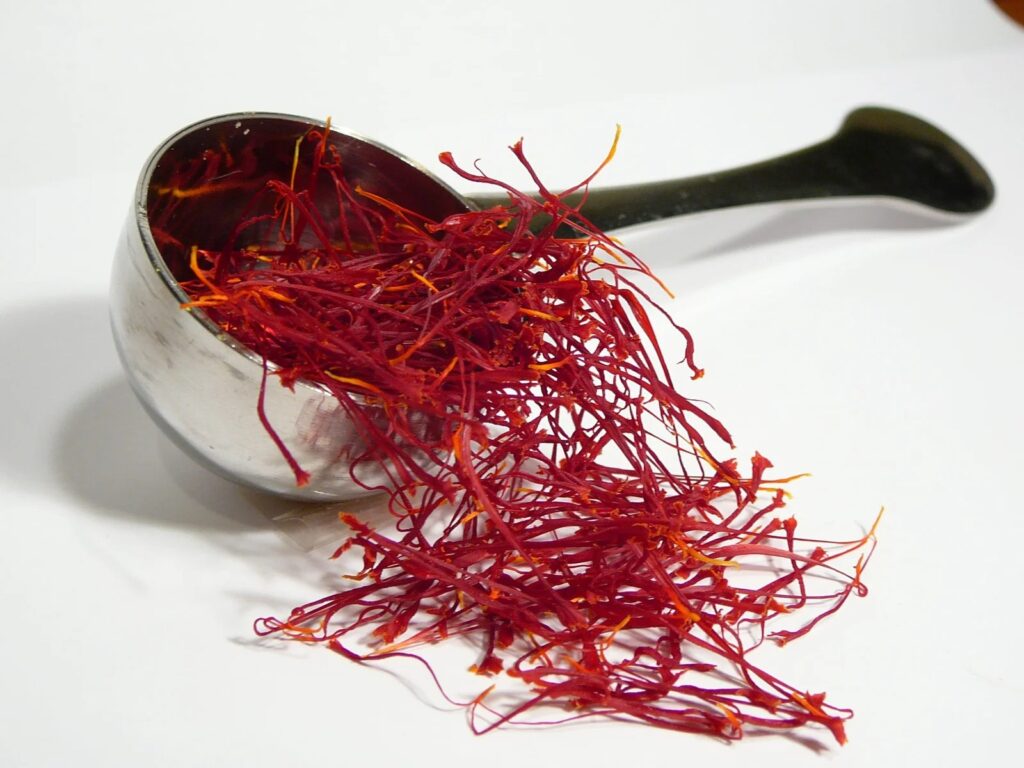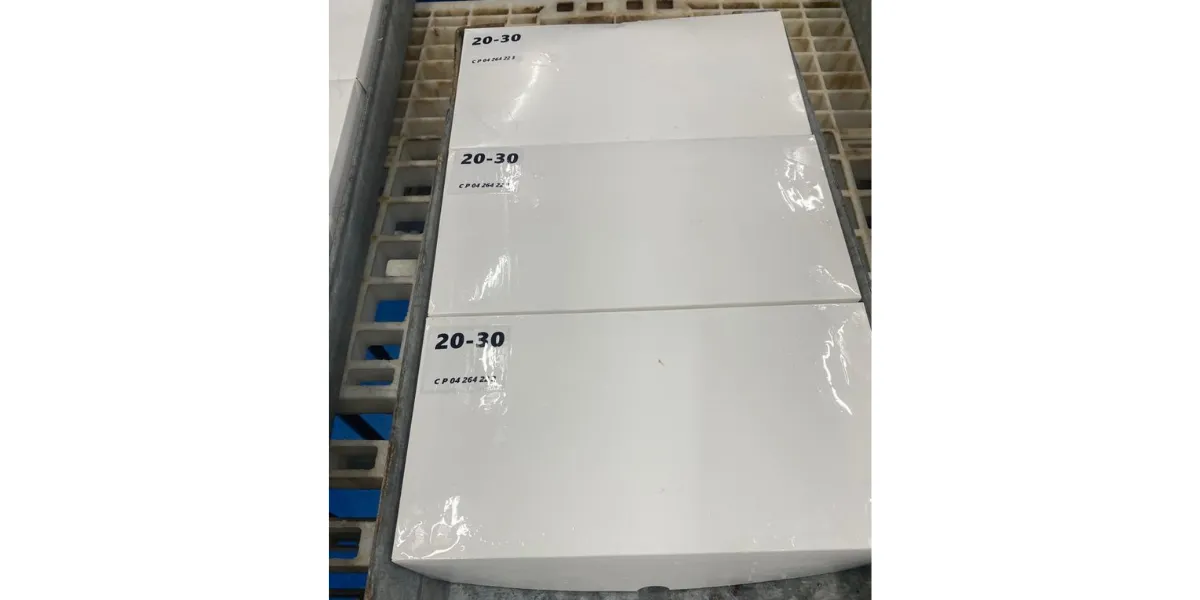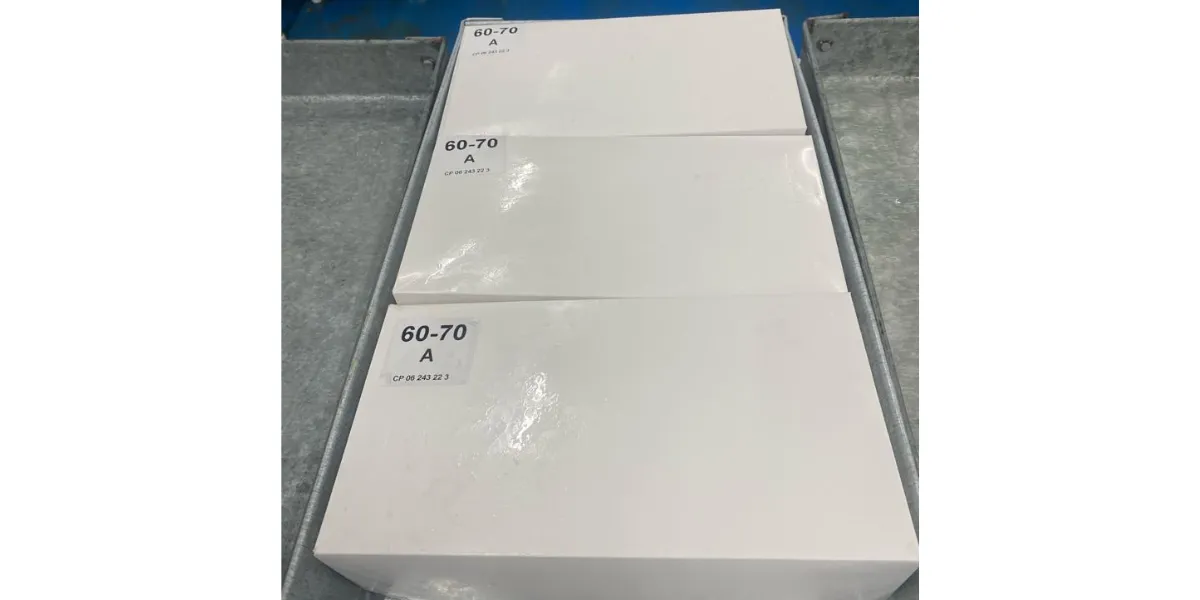Saffron isn’t just another spice—it’s an ancient treasure, revered for its deep crimson threads, rich aroma, and powerful health benefits. Known as “red gold,” saffron has been a symbol of luxury, used in cuisine, medicine, and even sacred rituals for centuries. But not all saffron is created equal. With global demand rising, the market is now flooded with low-quality and adulterated saffron.
How can you distinguish the best saffron in the world from inferior varieties? What makes Persian saffron superior to Spanish saffron? How does saffron’s quality impact its flavor, color, and health benefits? In this guide, we’ll explore the top 10 best saffron varieties and uncover the secrets of true saffron quality.
If you want to unlock the full potential of this extraordinary spice—whether for cooking, wellness, or beauty—stay with us as we dive into the fascinating world of saffron.
1. Persian Saffron: The Gold Standard of Saffron Quality
Persian saffron, primarily grown in Iran, is widely considered the highest quality Saffron in the world. It has an intense aroma, deep red color, and strong flavor, making it a top choice for chefs and health-conscious consumers. The reason behind its superiority lies in Iran’s climate, soil conditions, and traditional hand-harvesting methods.
The most premium variety of Persian saffron is Super Negin, which contains long, unbroken stigmas with minimal yellow or orange parts. This ensures higher concentrations of crocin (color), picrocrocin (bitterness), and safranal (aroma)—the three key compounds that determine saffron quality.
Scientific studies have confirmed that Persian saffron has higher antioxidant activity, making it beneficial for reducing inflammation, improving mood, and enhancing memory. Many luxury brands worldwide rely on Persian saffron for its unmatched quality and consistency.
2. Spanish Saffron: How It Compares to Persian Saffron
Spain is another major player in saffron production, particularly in La Mancha and Aragón regions. Spanish saffron has a milder aroma and a more subtle taste, making it popular in paella, seafood dishes, and Mediterranean cuisine.
Why Is Persian Saffron So Expensive? Unlike Persian saffron, which is sun-dried, Spanish saffron is often toasted during processing. This gives it a slightly smoky flavor but also reduces some of its essential oils. While Spanish saffron is highly valued, it typically has a lower crocin content compared to Persian saffron, meaning its color intensity may not be as deep.
One of the most famous types of Spanish saffron is Coupe saffron, which contains mostly red stigmas with minimal yellow parts. However, due to differences in processing and grading, it’s generally considered a step below Persian Super Negin in terms of quality.
3. Kashmiri Saffron: The Rarest and Most Aromatic Variety
Kashmiri saffron, cultivated in India’s Kashmir Valley, is known for its thicker and longer threads compared to other varieties. It has an unparalleled aroma and a dark maroon-red color, which indicates a high crocin content.
What sets Kashmiri saffron apart is its unique floral fragrance, which makes it a favorite for sweets, herbal teas, and Ayurvedic medicine. However, due to low production levels, authentic Kashmiri saffron is extremely rare and often more difficult to find than Persian or Spanish saffron.
One downside of Kashmiri saffron is its limited shelf life. Since it retains a higher moisture content compared to Persian saffron, it requires proper storage to maintain its potency. Keeping it in an airtight container away from light and humidity ensures it stays fresh for longer.

4. Greek Saffron (Krokos Kozanis): A Hidden Gem in the Saffron World
Greek saffron, also known as Krokos Kozanis, is cultivated in northern Greece and is one of the oldest saffron varieties in Europe. It is certified with Protected Designation of Origin (PDO) status, meaning it must meet strict quality control standards.
This saffron has a slightly earthy and floral aroma, making it perfect for herbal teas, soups, and Mediterranean dishes. Greek saffron undergoes careful hand-picking and drying processes, ensuring that it retains its essential oils and medicinal properties.
Studies have shown that Greek saffron is rich in antioxidants and carotenoids, which contribute to its potential anti-inflammatory and mood-enhancing benefits. While it may not be as widely recognized as Persian or Spanish saffron, it remains a high-quality option for those seeking a milder yet aromatic variety.
5. How to Identify Fake Saffron and Avoid Scams
The global demand for saffron, often referred to as “red gold,” has led to the proliferation of counterfeit products in the market. Adulterated saffron not only deceives consumers but can also pose health risks. To ensure you’re purchasing authentic saffron, consider the following guidelines:
1. Appearance: Genuine saffron consists of trumpet-shaped red stigmas with a bulbous end. The threads are uniformly deep red, and the presence of yellow or white parts indicates lower quality or adulteration. Be wary of uniformly colored threads without natural variations, as these could be artificially dyed.
2. Aroma: Authentic saffron emits a distinct, potent aroma described as a blend of honey and hay. If the product lacks this characteristic scent or smells synthetic, it may be fake.
3. Taste: Pure saffron has a slightly bitter and earthy flavor. A sweet taste suggests adulteration with substances like sugar or artificial additives.
4. Solubility Test: Place a few saffron threads in warm water or milk. Authentic saffron releases its color gradually over 10 to 15 minutes, turning the liquid a golden-yellow hue while the threads remain intact. If the color disperses rapidly or the water turns a bright red, it indicates artificial coloring.
5. Price Point: Saffron is one of the most expensive spices globally due to its labor-intensive harvesting process. Prices significantly lower than the market average should raise suspicion about the product’s authenticity. (Global Saffron Market: Trends, Prices, and Future Predictions)
6. Packaging and Source: Purchase saffron from reputable suppliers who provide information about the product’s origin and quality certifications. Avoid products with vague labeling or lack of transparency regarding their source.
7. Laboratory Testing: For bulk purchases, consider laboratory testing to verify the saffron’s purity and quality. Reputable suppliers often provide certificates of analysis upon request.
By adhering to these guidelines, consumers can protect themselves from fraudulent saffron products and ensure they experience the genuine flavor, aroma, and health benefits that authentic saffron offers.
6. The Best Saffron for Culinary Use: Which One Should You Choose?
Selecting the right saffron variety is crucial for culinary applications, as each type imparts unique flavors, colors, and aromas to dishes. Here’s a guide to help you choose the best saffron for your culinary needs:
1. Persian Saffron (Iranian Saffron): Renowned for its deep red color and robust aroma, Persian saffron is ideal for dishes requiring vibrant color and intense flavor. It’s commonly used in Middle Eastern and Mediterranean cuisines, enhancing dishes like biryanis, stews, and pilafs.
2. Spanish Saffron: With a milder flavor and a slightly sweet undertone, Spanish saffron is perfect for traditional dishes such as paella and various seafood recipes. Its subtlety allows it to blend seamlessly without overpowering other flavors.
3. Kashmiri Saffron: Known for its dark maroon-purple hue and strong aroma, Kashmiri saffron is highly prized but less readily available. It’s excellent for rich dishes and desserts, imparting a distinctive flavor and color.
4. Greek Saffron (Krokos Kozanis): This variety offers a balanced flavor profile with earthy notes, making it suitable for soups, sauces, and herbal teas. Its versatility makes it a favorite in various European dishes.
5. Moroccan Saffron: With a slightly bitter taste and strong coloring properties, Moroccan saffron is often used in North African cuisines, including tagines and couscous dishes.
Tips for Culinary Use:
• Toasting: Lightly toasting saffron threads before use can enhance their flavor. Be cautious not to burn them, as this can lead to bitterness.
• Infusion: Soak saffron threads in warm water, broth, or milk for about 20-30 minutes before adding them to your dish. This process extracts maximum color and flavor.
• Measurement: Due to its potency, a small amount of saffron goes a long way. Typically, 1-2 teaspoons of threads are sufficient for most recipes serving four to six people.
By understanding the unique characteristics of each saffron variety, you can select the best one to elevate your culinary creations, ensuring an authentic and flavorful experience.
7. Organic vs. Non-Organic Saffron: Does It Really Make a Difference?
With the growing awareness of health and sustainability, many consumers are now choosing organic saffron over conventional varieties. But does organic saffron offer superior quality and benefits, or is it just a marketing trend?
Key Differences Between Organic and Non-Organic Saffron
1. Cultivation Practices
• Organic saffron is grown without synthetic pesticides, herbicides, or chemical fertilizers.
• Non-organic saffron may contain pesticide residues, which can alter its purity and health benefits.
2. Purity and Quality
• Organic saffron is often tested for contaminants and certified by organizations like USDA Organic or EU Organic.
• Non-organic saffron may be more prone to chemical exposure during farming and processing.
3. Health Benefits
• Since organic saffron is free from synthetic chemicals, it may retain higher levels of crocin, picrocrocin, and safranal, the three key bioactive compounds responsible for its color, taste, and aroma.
• Non-organic saffron may still contain these compounds but could have trace amounts of chemicals that affect its overall health benefits.
4. Environmental Impact
• Organic saffron farming promotes biodiversity, soil health, and sustainable water usage.
• Conventional saffron farming may lead to soil degradation and water contamination due to chemical fertilizers.
Should You Choose Organic Saffron?
If you prioritize purity, sustainability, and chemical-free products, organic saffron is the best choice. However, high-quality non-organic saffron from reputable sources can still offer excellent aroma, color, and medicinal benefits if it undergoes rigorous quality control.
Regardless of whether you choose organic or non-organic, always verify the saffron’s source and testing certifications to ensure its authenticity and potency.
8. Where to Buy the Best Saffron: Trusted Sources & Online Stores
With the high risk of adulterated saffron in the market, purchasing from trusted suppliers is crucial. But where can you find authentic, high-quality saffron that meets global standards?
Best Places to Buy Saffron
1. Direct From Farmers & Cooperatives
• Buying saffron directly from producers in Iran, Afghanistan, Kashmir, and Spain ensures you get fresh, unadulterated saffron.
• Look for fair-trade and cooperative-based sellers who follow sustainable farming practices.
2. Specialty Spice Shops
• High-end spice stores often carry ISO-certified saffron, ensuring purity and grading accuracy.
• Always check if the store provides information about the saffron’s origin, harvest date, and certification.
3. Online Marketplaces & Brand Websites
• Websites like Heray Saffron (Afghanistan), Mehr Saffron (Iran), and Krokos Kozanis (Greece) specialize in premium saffron.
• Amazon and eBay can have authentic options, but always verify seller reviews and third-party lab tests before purchasing.
4. Pharmacies & Health Stores
• Some pharmaceutical-grade saffron products are sold for medicinal use in capsule or supplement form.
• Ensure they are clinically tested and free from fillers or artificial additives.
Red Flags to Watch Out For
• Unreasonably Cheap Prices → Saffron is one of the most expensive spices; if it’s too cheap, it’s likely adulterated or low-quality.
• Artificial Coloring → Some sellers dye saffron threads with chemicals to enhance their appearance. Genuine saffron should gradually release a golden-yellow color when placed in warm water.
• Powdered Saffron → Unless purchased from a reputable source, powdered saffron is more likely to be mixed with turmeric, paprika, or artificial colorants.
To ensure you get pure, high-grade saffron, always choose certified sellers who provide transparent lab tests, customer reviews, and clear sourcing details.

9.How to Store Saffron Properly to Retain Its Potency
Saffron is a delicate spice, and improper storage can cause it to lose its color, aroma, and medicinal properties over time. To keep saffron fresh and potent for as long as possible, follow these expert storage tips:
1. Store in an Airtight Container
• Saffron absorbs moisture and odors easily, which can degrade its quality.
• Always keep it in a glass jar or a metal tin with an airtight seal to protect it from air exposure.
2. Keep It Away From Light & Heat
• Direct sunlight breaks down saffron’s active compounds, leading to loss of aroma and potency.
• Store it in a cool, dark place (such as a spice cabinet or pantry) away from the stove and other heat sources.
3. Avoid Storing in the Refrigerator
• Some believe refrigeration keeps saffron fresh, but humidity in the fridge can cause mold growth and loss of flavor.
• If you must refrigerate saffron, place it in an airtight vacuum-sealed bag to prevent moisture absorption.
4. Use a Silica Gel Packet for Humidity Control
• If you live in a humid climate, placing a small food-safe silica gel packet in the saffron container helps absorb excess moisture.
5. Use Within 2-3 Years
• While saffron doesn’t spoil like other spices, its potency declines over time.
• For the best flavor and benefits, use saffron within 2-3 years of purchase. (Best Ways to Use Saffron in Cooking & Drinks)
By following these storage tips, you can ensure that your saffron stays fresh, aromatic, and potent, preserving its culinary and medicinal properties for a longer period.
Choosing the Right Saffron for Your Needs
Saffron is not just a spice; it’s a symbol of quality, tradition, and health. From the intensely aromatic Persian saffron to the rare and fragrant Kashmiri saffron, each variety has its unique characteristics and benefits. Understanding the scientific factors that define saffron quality—such as crocin, safranal, and picrocrocin levels—can help you make an informed choice.
Whether you’re looking for culinary excellence, medicinal benefits, or luxurious aroma, choosing high-quality saffron ensures you experience its true potential. By selecting trusted sources and authentic varieties, you can enjoy the finest saffron in the world without compromising on purity.
Now that you know the top saffron varieties and what makes them superior, which one do you think suits your needs best? Let us know your thoughts, and stay with us for more expert insights into the fascinating world of saffron!




